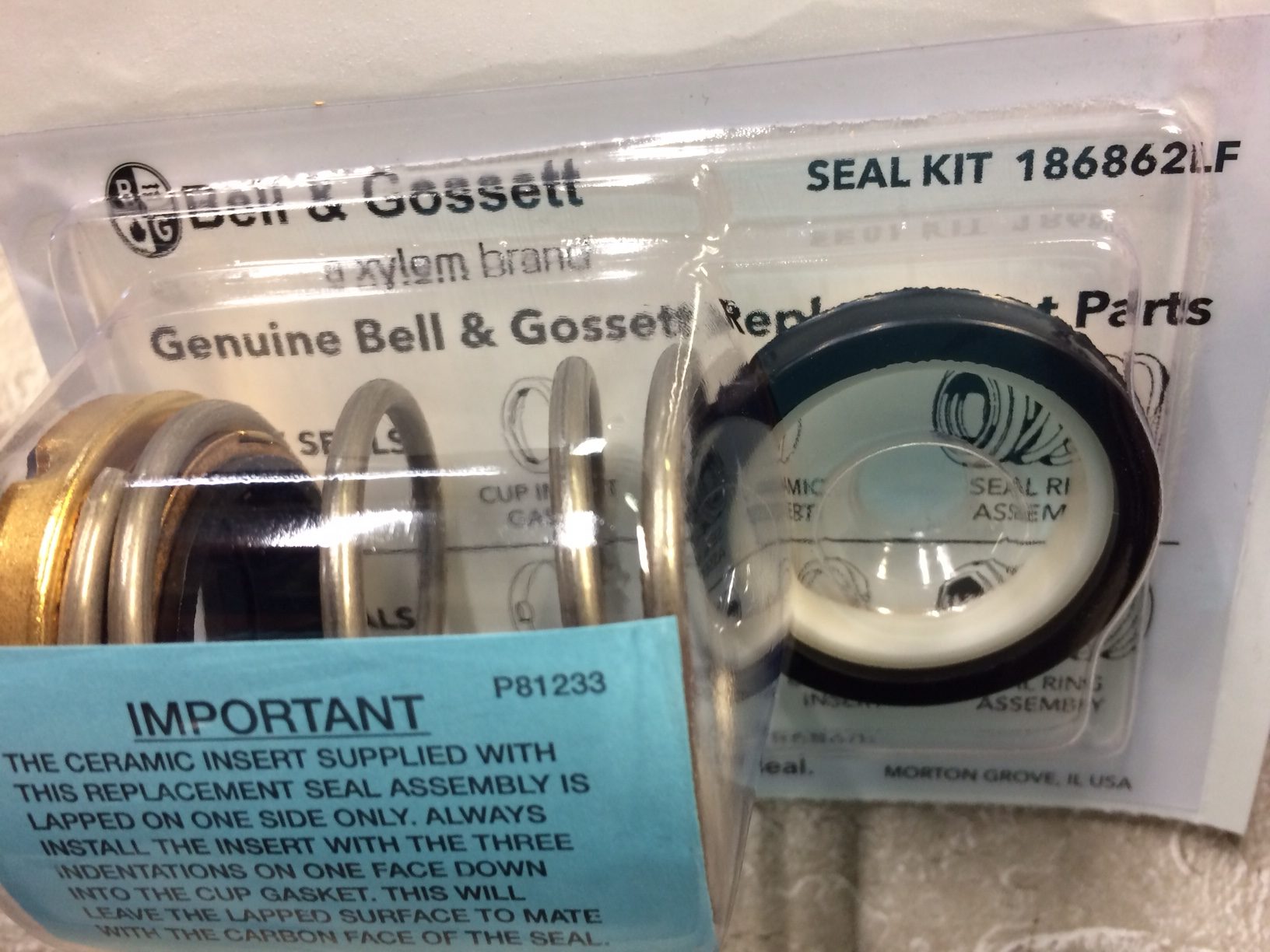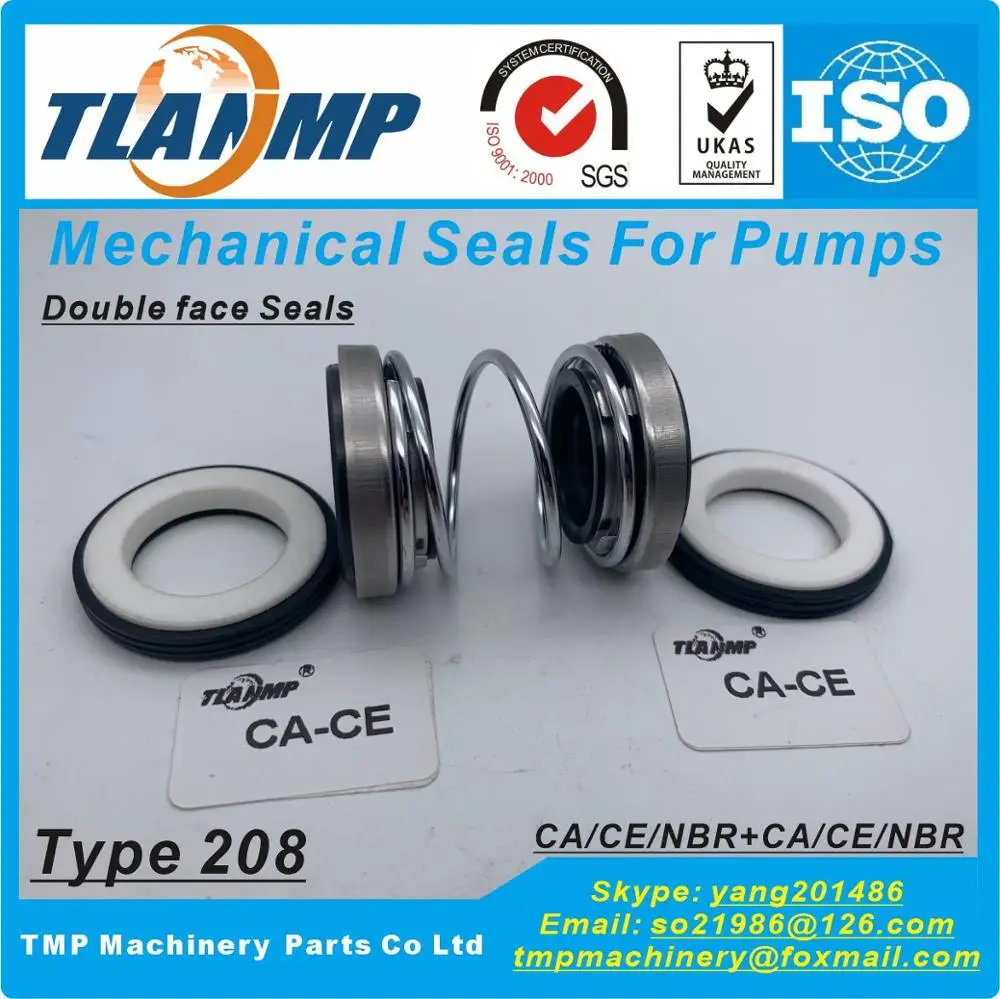carbon vs silicon carbide mechanical seal brands

You must consider the “environment” the seal will be exposed to when selecting the design, and importantly, the material of your mechanical seal. The saying “pay me now, or pay me later” very much applies to seals as not selecting the right material will cost more in the long run.
For all environments the material used for the seal face must be stable, be able to conduct heat, be chemically resistant and deliver good wear resistance. However, certain environments will need these properties to be stronger than in others.
Abrasive and harsh environments mean that the material selected must be able to withstand this, which can be more expensive. However the cost will be returned to you over time as poor material grade selection will only result in costly shut downs, repairs, refurbishments or replacements of the seals once again.
Various materials can be used for seals depending on the requirements and environment they will be used for. By looking at material properties such as hardness, stiffness, thermal expansion, wear and chemical resistance, you are able to find the ideal material for your seal.
When mechanical seals first arrived, seal faces were often made from metals such as hardened steels, copper and bronze. Over the years, more exotic materials have been utilised for their property advantages, including ceramics and various grades of mechanical carbons.

Sintered / Reaction-Bonded Silicon Carbide - Silicon carbide is an advanced ceramic material. The earliest type of silicon carbide available for use in mechanical seals was reaction bonded and developments have made a number of variations available. Silicon carbide is extremely hard, being highly wear resistant and with good mechanical properties. It has high temperature strength and thermal shock resistance, maintaining its high mechanical strength at temperatures as high as 2550°F (1400°C). Above 2570°F (1410°C) the free silicon melts and strength decays. These advanced ceramics are routinely used in midstream applications as typically the mating face pair with a carbon ring in light hydrocarbon or finished products due to the exceptional PV characteristics of the material pairs. The ceramic materials are typically run against one another (dissimilar grades) in high viscosity applications such as crude oil. Robust drive designs for seal rings of this material are recommended to avoid potential hang-up when contacting the comparatively softer metal components of the seal retainer.
Tungsten Carbide - Cemented tungsten carbides are derived from a high percentage of tungsten carbide particles bonded together by a ductile metal. The common binders used for seal rings are nickel and cobalt. The resultant properties are dependent upon the tungsten matrix and percentage of binder (typically 6 to 12% by weight per volume). Tungsten carbide is an extremely tough material with good wear resistance, with Nickel bound being the most common material used in midstream pipeline applications. Seal rings in this material offer improved protection against mechanical or thermal shock, but will be limited in PV characteristics and are more susceptible to heat checking damage when compared against advanced ceramics.
Silicon Carbide / Graphite Composites - These are sintered silicon carbide composite containing free graphite. The free graphite reduces friction, improving dry run survivability and better thermal shock resistance than conventional sintered materials. Grades are also available with a network of non-interconnecting pores, which entrap fluid to support hydrodynamic lubrication. These materials offer exceptional PV characteristics when paired with a corresponding advanced ceramic material. Seal rings manufactured from graphite / silicon carbide composite materials are typically used in crude oil or finished products and light hydrocarbon service especially when operating pressures may exceed the limits of conventional metal-filled carbon grades.
![]()
Some knowledge of the different materials that are common within mechanical seals is important to determine the correct seal when it comes to seal faces combinations and the material of the o-rings.
With the mechanical seal we are dealing with two seals, primary and secondary. The primary seal is the seal created by the hydrodynamic film between the two (very flat) seal faces. The secondary seal is the seal between the stator part and the housing and the rotor part on the shaft. The secondary seal is (almost always) achieved by using o-rings or gaskets (elastomers). Below you will find a brief overview of the most commonly used materials and combinations. Contact Qseals directly for advice.

For typical HVAC applications, carbon-ceramic have stainless steel metals, BUNA elastomers, a 99.5% pure aluminum oxide ceramic stationary seal face, and a carbon rotating face. These seals work well with the temperatures mentioned above and a pH neutral range of 7.0-9.0. They can handle up to 400 ppm of dissolved solids and 20 ppm of undissolved solids which satisfied most system requirements.
In most applications carbon-ceramic seals work fine but there are certain circumstances when a different type of material for the mechanical seal should be specified. These include:
Systems with high pH levels. Most HVAC applications maintain a pH from 7.0 to 9.0. Once in a while the pH is too high for the carbon-ceramic seal material. The main issue may be located in the chemical treatment portion of your specification. There are specifications that call for the pH to be maintained at levels in the 9.0-11.0 range. If your specification calls for this range, the pump seal material specification should be changed to EPR/Carbon/Tungsten Carbide (TC) or EPR/Silicon Carbide (SiC) /Silicon Carbide (SiC). We recommend the EPR/SiC/SiC material since that seal can handle pH up to 12.5 which gives some “wiggle room.”
Higher solids levels. Solids, otherwise known as dirt, are another area of concern for mechanical seals. If the system is dirty or has silica in the water, you may find, once again, that you need the EPR/SiC/SiC seal. The standard Buna/Carbon/Ceramic seal in HVAC systems cannot handle any silica and the solids handling capability was mentioned earlier in this article. The silicon carbide seal can handle 60 times the dissolved solids content and double the undissolved solids content with 20 ppm silica content thrown in for good measure.
So, why not just always specify EPR/SiC/SiC seals? There are two reasons: cost and lead-time. This seal will cost three times as much as the standard seal. In addition, since the carbon-ceramic seal is standard, there may be additional lead-time to get a pump with a special seal.
Improperly mixed glycols. The term glycol is a bit of a misnomer when it comes to heat transfer solutions in HVAC systems. Glycol is used in many applications from shaving lotions to whipping cream to automotive antifreeze. In HVAC systems you want a properly mixed glycol-based heat transfer fluid that has the correct inhibitors for the application. If you use automotive antifreeze in HVAC systems, the silica based inhibitors will create a gel in the coils that blocks heat transfer and flow. That is, if the seals don’t leak first!
We commonly see Dowtherm® SR-1 and Dowfrost™ HD heat transfer fluids used for these type of applications. These products are made for use in our industry but should be mixed according to the manufacturer’s instructions. Dow recommends they be pre-mixed with deionized water before filling the system. If you simply mix these product with city or well water the calcium and magnesium in water will mix with inhibitors and cause a particulate that exceeds the ppm of normal seals.
Occasionally contractors will put the glycol based fluid in the system, filled it with water and then turn on the pump to “mix” the solution in the piping system. This subjects the pump seals to shots of up to 100% ethylene or propylene glycol which is well beyond the maximum recommended amounts for even silicon carbide seals.
Our experience is that the standard carbon ceramic seal work fine with properly mixed glycol products designed for our industry. However, brands vary in their quality and make-up so we cannot say that carbon-ceramic seals are appropriate for all glycol mixtures. These fluids do carry a higher pH than water, so we recommend specifying a glycol seal if there is any question.

GRAPHITAR carbon is an ideal material for use as a sliding face within a mechanical seal configuration, operating successfully against counterfaces in materials such as Silicon Carbide , Tungsten Carbide and other ceramics. GRAPHITAR is a very hard material and extremely resistant to wear. It is lubricated by most fluids so that the medium being sealed can serve as the seal lubricant. GRAPHITAR’s permeability can be controlled to allow the lubricating medium to be metered to the sealing surface or to be impervious and fully “Leak Tight” to 6 BAR pressure of nitrogen.
Seal faces can be manufactured as fully machined components, lapped to 3 light bands, as semi finished parts or as finished parts pressed to size parts.

Distributor of industrial tools & equipment. Products include abrasives, adhesives, bushings, coolants, boring bars, broaches, hand tools, cutters, tool holders, coatings, cleaners, reamers, lubricants, drills, fasteners & gauges. Positioners, knives, brushes, crimpers, cylinders, adhesive dispensers, drill presses, acutators, seals, bulbs, lamps, lifts, pins, polishers, fittings, pumps, punches, saws, sealants & wrenches are also available. Capabilities include sharpening, kitting, repairing, vending, fabricating, heat treating, outsourced storeroom management, reverse engineering, band saw welding, calibration, hardening, bar coding, inventory & process consulting & outsourced procurement. Kan Ban programs.

Materials used for the manufacture of mechanical seal faces. These materials must meet the tribological demands unique to mechanical seals. Industry has evolved primarily to the use of mechanical carbons and ceramics for these components. A mechanical seal (Fig. 1) is by its very nature a collection of components that are designed to control leakage of a fluid through a sealing interface. These components serve a wide variety of functions and correspondingly require a wide range of material properties. Many of these properties, such as mechanical strength, thermal conductivity, or corrosion resistance, are similar to considerations made for many other devices. Some properties, however, are unique to mechanical seals, such as coefficient of...
S. Chinowsky, Friction and wear of carbon-graphite materials, in ASM Handbook, Friction, Lubrication, and Wear Technology, vol. 18, ed. by P. Blau (1992)
M.B. Huebner, Material selection for mechanical seals, in Proceedings of the 21st International Pump User’s Symposium, Turbomachinery Laboratory, Texas A&M University, College Station, Texas (2005)
Editors and AffiliationsDepartment of Mechanical Engineering and Center for Surface Engineering and Tribology, Northwestern University, Evanston, IL, USA

Our NUTECH cartridge mechanical seals are designed to fit all ANSI pumps for ease of installation and are pressure tested at our Texas manufacturing facility prior to shipping. We can custom design any cartridge style seal to fit your most demanding applications. We use premium grade materials of construction throughout. All seals are made in the USA.

Due to their advanced performance characteristics, Morgan silicon carbide materials are used across many challenging industrial applications. Their robust properties make them ideal for use as mechanical components and wear parts that are specified in applications such as but not limited to:




 8613371530291
8613371530291